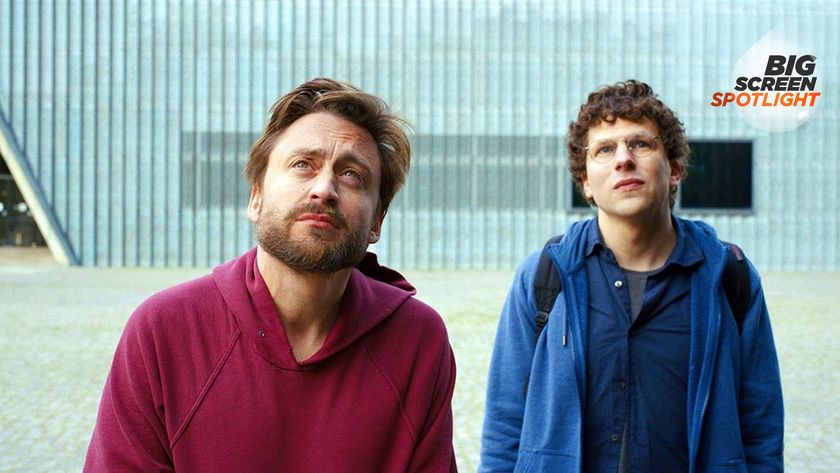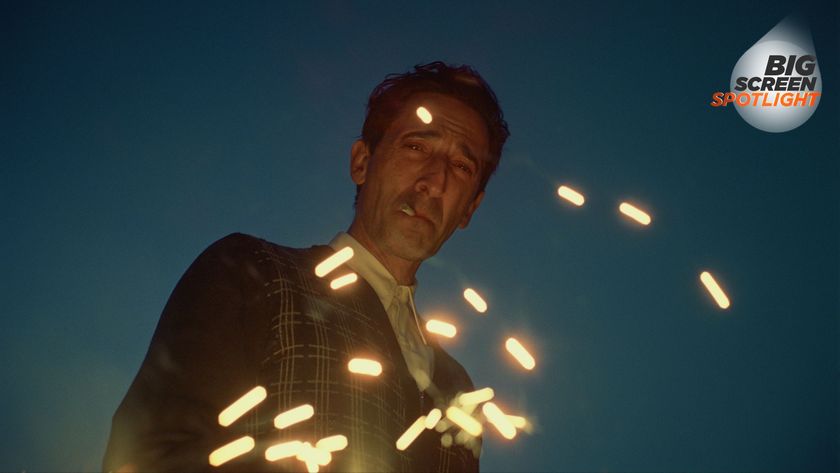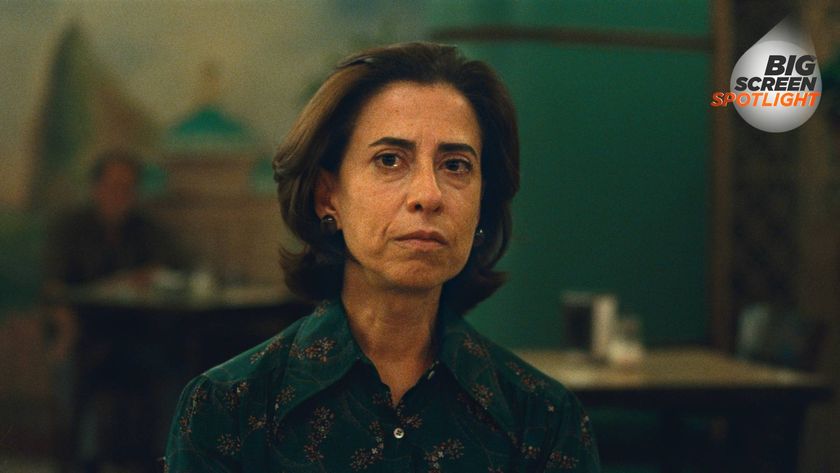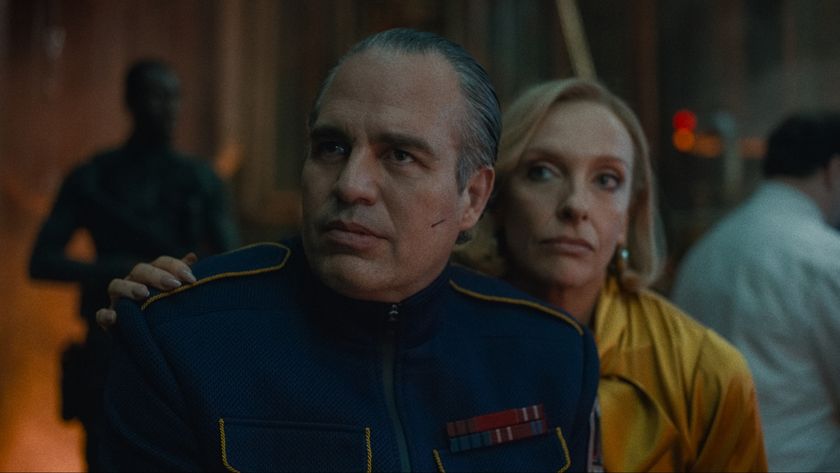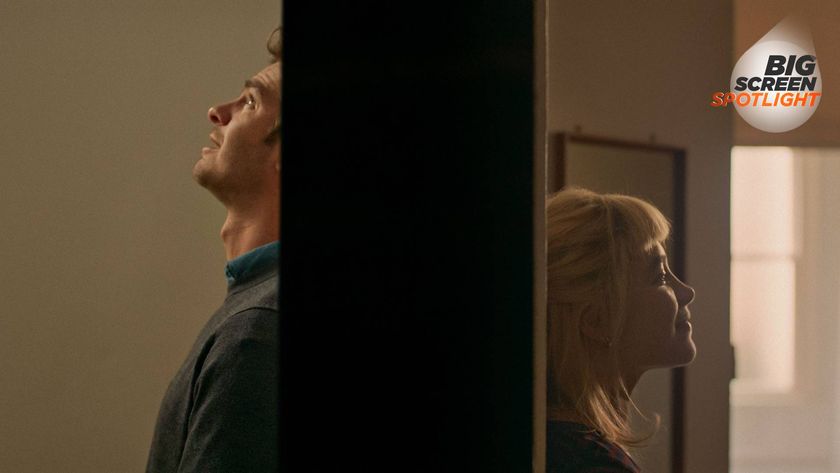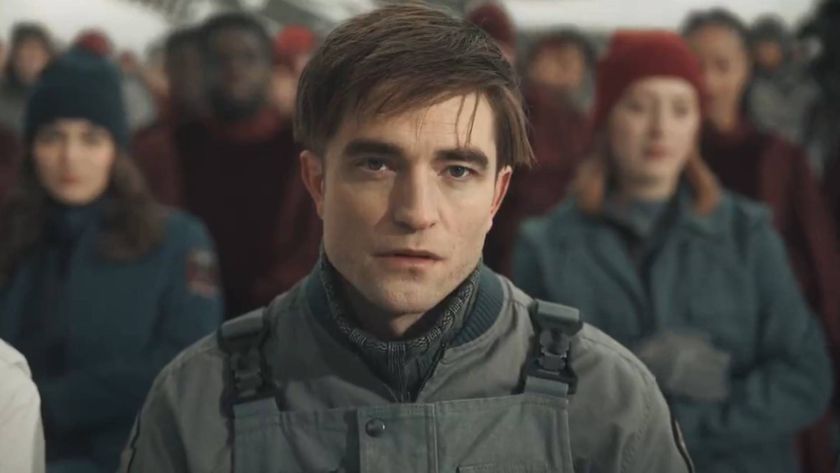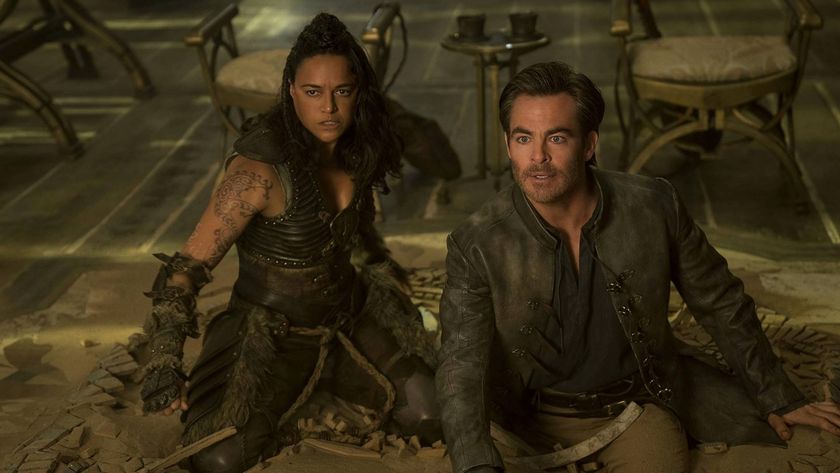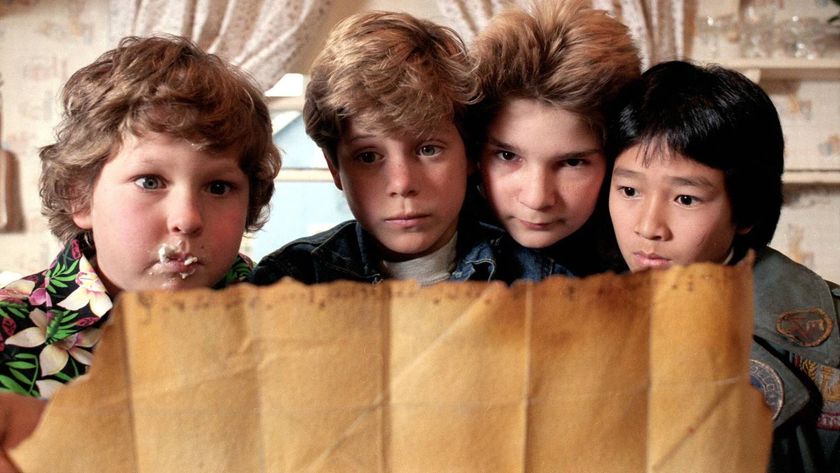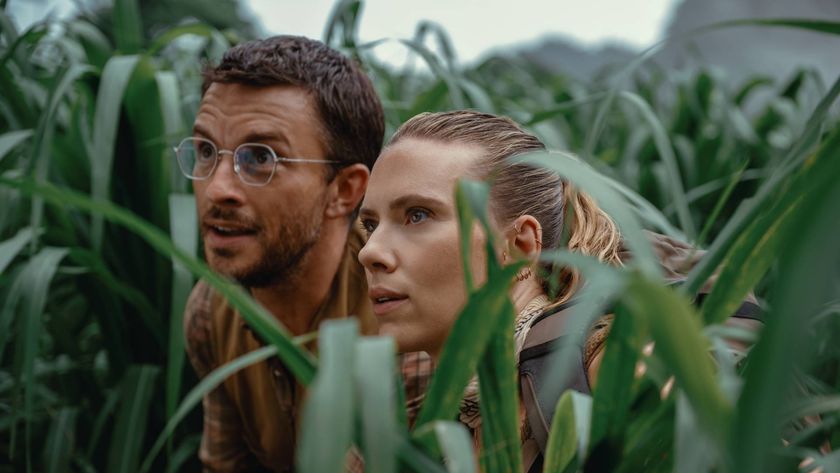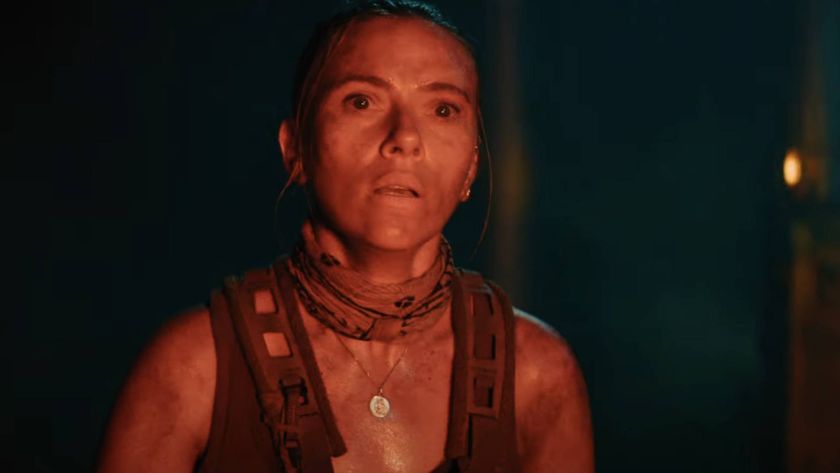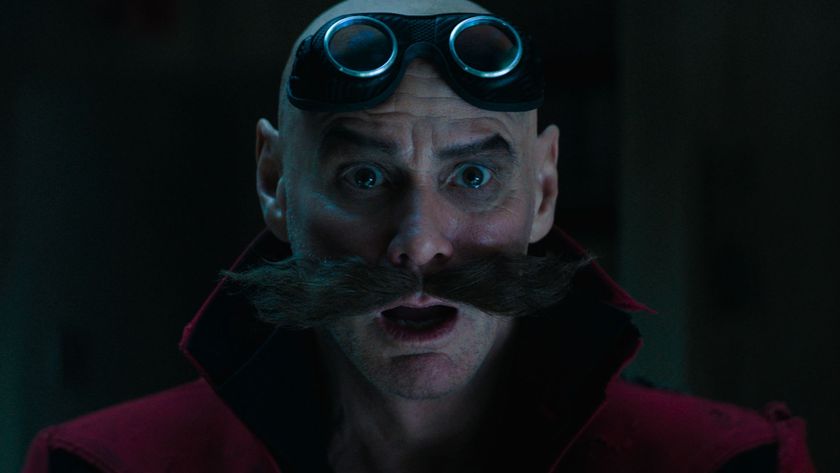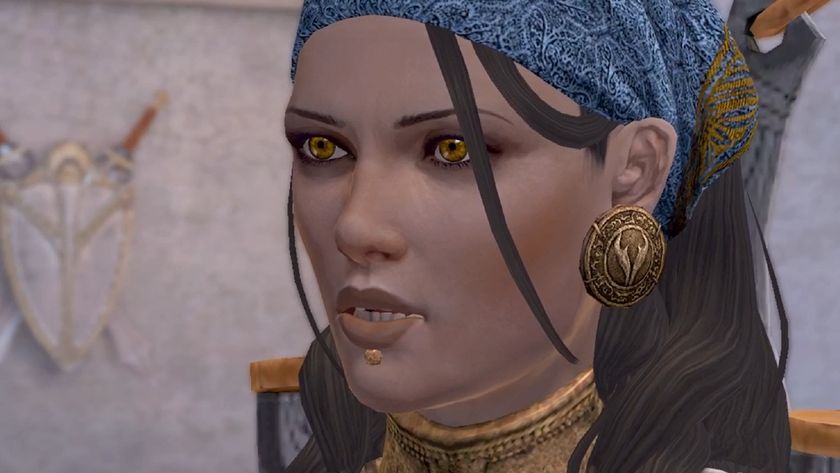Asteroid City cast talk Wes Anderson, taco nights, and working in a fully functional mini-town
EXCLUSIVE: Bryan Cranston, Jeffrey Wright, and more discuss the latest Wes Anderson wonder
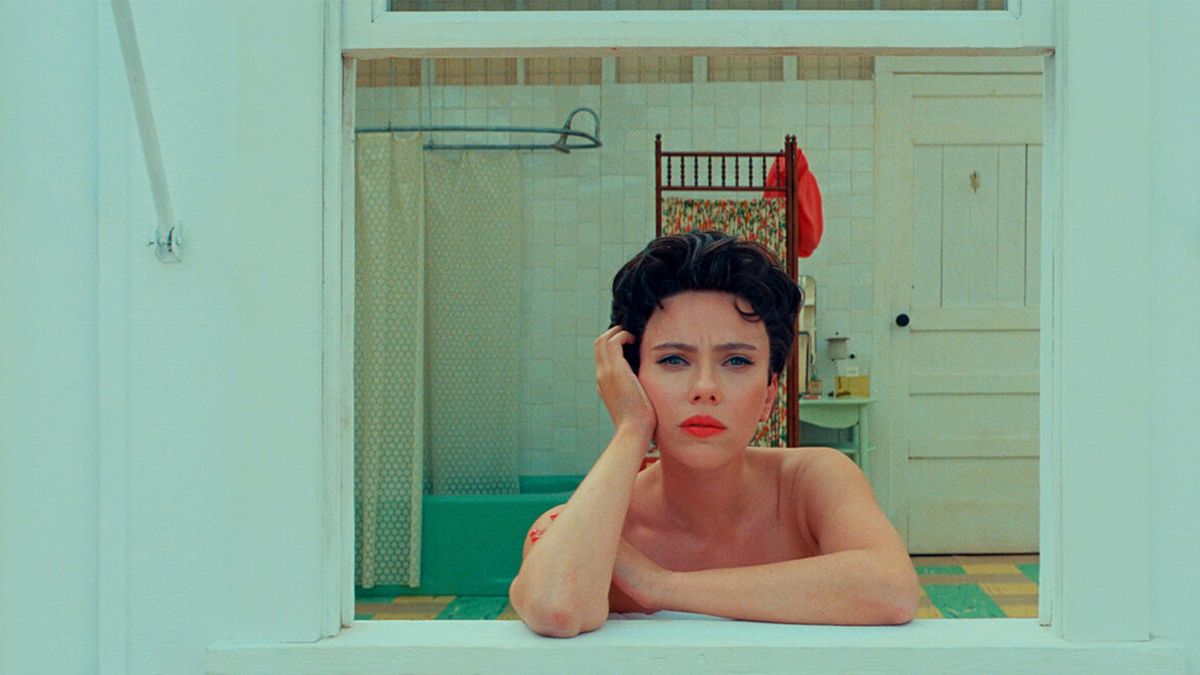
With Asteroid City, the Wes Anderson club just got bigger. As you may know, the director of films including The Royal Tenenbaums, The Grand Budapest Hotel, and The French Dispatch loves an ensemble cast. This time around newcomers include Tom Hanks, Steve Carell, Matt Dillon, Maya Hawke, and Hope Davis. That’s in addition to regulars like Jason Schwartzman, Tilda Swinton, Edward Norton, Willem Dafoe, Adrien Brody, Liev Schreiber, and Jake Ryan. Or even those on their second Anderson outing, like Scarlett Johansson, Bryan Cranston, Stephen Park, Jeffrey Wright, and Rupert Friend. Phew…
To prevent these A-Listers from all sitting alone in their hotel rooms, Anderson encourages his cast to hang out. Which means having dinner together, every night. “Wes always sits at the head of the table and when you first arrive, you sit next to him and then you kind of move down the table so the new arrivals can sit next to him,” explains Davis (Captain America: Civil War). “And suddenly, you're with thirty movie stars at the dinner table. It was kind of intense in the beginning, but you do form a real kind of theatre troupe, a real community.”
"It's all on the page"
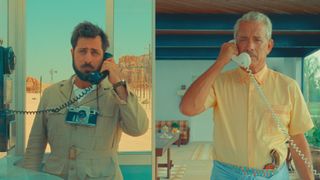
In the story, Asteroid City is a fictional 1950s American desert town where several families – including Davis’ frazzled mother Sandy Borden, Schwartzman’s grieving father-of-four Augie Steenbeck, Johansson's glam movie star Midge Campbell, and Hanks’ gun-toting Stanley Zak – gather for a Junior Stargazers competition. But framing this are black-and-white segments depicting a playwright Conrad Earp (Norton) staging his latest opus – ‘Asteroid City’. “Wes had mentioned that he had this interest in directing theatre,” says Stephen Park (Lt. Nescaffier from The French Dispatch). “And so this very much is like that.”
- Jesse Eisenberg and Kieran Culkin on their bittersweet new movie A Real Pain and resisting advice from "a big Hollywood director" to "make a billion dollars" with a happy ending
- Adrien Brody and the cast and director of The Brutalist on their Oscar-nominated movie: "To make great cinema, you have to be vulnerable"
Co-written with Roman Coppola, if you’ve ever wondered what an Anderson script looks like, the cast can tell you. “It's all on the page. Everything is described,” says Davis. Just like his movies, his scripts are precision-tooled. “Even the breaths are marked out,” says Jeffrey Wright, who like Park broke his Anderson cherry on The French Dispatch. So, does this director welcome improvisation? “No!” chuckles Wright. “Not in the least, not in the slightest!” Then again, who could do it as well as Wes? “I don't think I could improvise Wes Anderson,” says Cranston, who plays the on-screen narrator in the black-and-white segments.
Entering The Twilight Zone
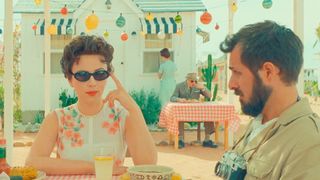
Aside from the exacting nature of the screenplay, this being an Anderson movie, it’s also packed with ideas. “There's so many things in this – it's extraordinary,” says Cranston, who previously voiced a role on Anderson’s animated yarn Isle of Dogs. “[It deals with] grief, loss, but also new love. Placement. Where's your community? These young kids, trying to figure out where they belong and trying to understand what's happening to their bodies. Rekindled love, family, responsibility. There's so many themes.”
In the play-within-the-movie, the families all experience an alien encounter, leading to them to be locked down under military control, led by Wright’s General Gibson. So, is this the closest Anderson has come to making a sci-fi movie? “So far, I would say,” says Ryan. “I think of it more as an episode of The Twilight Zone.” The young actor, who plays Augie’s eldest brainiac son Woodrow, first collaborated with Anderson on his 2012 boy scout tale Moonrise Kingdom. “He does have a good eye for certain things,” he nods, “especially locations.”
Constructing Asteroid City
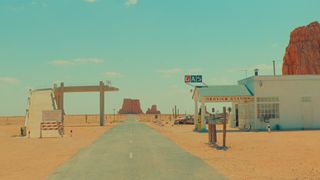
Talking of which, the entire film was shot on the outskirts of Chinchón, a medieval town 50 km south-east of Madrid, Spain. With unobstructed views, it was the ideal place to construct ‘Asteroid City’, which is meant to be located on the California/Nevada border. “They built the entire set on top of a watermelon patch,” reveals Ryan. Environmentalists, however, can rest easy. “No watermelons were harmed in the making of the movie!” adds Schwartzman. “They were on harvest. We didn't smush any.”
Sign up for the Total Film Newsletter
Bringing all the latest movie news, features, and reviews to your inbox
Adam Stockhausen, Anderson’s regular production designer since Moonrise Kingdom, created a fully-functioning mini-town, with a real garage, motel, and diner. No wobbly cardboard-backed sets here. “There was actual gasoline in the gas station,” says Ryan. “No communal showers, though, unfortunately.” The set even had properly plumbed toilets, for the cast and crew. “Wes had put in real bathrooms,” adds Park. “Decorated with flowers. Usually you're sent into a little cubby or something. But these bathrooms were like going into a beautiful hotel.”
If you walk down the road, as you get farther, it's like Willy Wonka in the elevator
Stockhausen also used ‘forced perspective’ techniques to create the idea of the desert stretching towards the mountains and the horizon in the far distance. A classic ruse employed in movies right back to the Golden Age of Hollywood, it’s a way of tricking the eye. “I’ve never gotten a chance to actually work on a movie where those types of techniques were employed,” says Schwartzman. “You see these telephone poles. But if you walk down the road, as you get farther, it's like Willy Wonka in the elevator... I'm taller than the telephone poles at the end of the road!”
Watermelons weren’t the only crop involved in Asteroid City. While some of the black-and-white segments were shot in real old-style theatres in Chinchón, the production also commandeered a garlic factory, where a train compartment set was built for one particular scene. Those pungent bulbs were stored in a nearby room. “It had a certain smell but it had its charm” laughs Ryan. “I love garlic so it was fine by me” adds Schwartzman. “I'm Mr. Garlic! When they said we're shooting in a garlic place... perfect!”
Getting the band back together
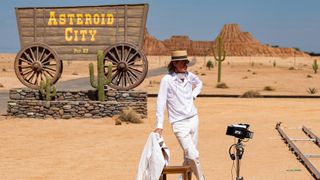
When they weren’t shooting, the entire cast were hanging out at the Parador Hotel in Chinchón. It sounds fairly idyllic, especially with the likes of Pulp’s Jarvis Cocker and Brazilian musician Seu Jorge, who play cowboys in Asteroid City, hanging out. “We had music every night,” says Friend. “I mean, guitars would come out and Jorge would sing. Then we had this beautiful Barcelonian bass player and French banjo player.” Friend joined in too, having learnt to play the Lap Steel guitar for his role as Montana, the leader of the cowboys.
Cocker was even joined by his fellow Pulp bandmate Richard Hawley, who together produced an original song ‘Dear Alien (Who Art In Heaven)’ for the movie – penned by Cocker and Anderson. So, what with Pulp reforming, did Cocker and Hawley treat the cast and crew to any old classics before their current tour? “Sure did,” says Schwartzman, before promptly forgetting the title. “What is it called? ‘I'm not Jesus though I have the same initials.’” That’s the opening line from the band’s song ‘Dishes’. “That’s one of my favourites. But everyone got involved musically. Matt Dillon's a really knowledgeable percussionist. So he's down there playing!”
Tacos anyone?
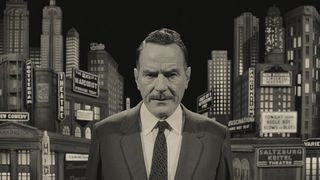
Bryan Cranston even asked Anderson if he could host a taco night. The actor shipped in his mezcal, Dos Hombres, which he co-owns with his Breaking Bad co-star Aaron Paul. “We had a little station there,” says Cranston, “and I was shaking up margaritas and palomas.” Anderson joined everyone for the feast, but the diligent director slipped away early to prepare for the following day’s scenes.
“I was shaking and I looked up, and I saw him open the balcony doors [from his room],” adds the actor. “He was there for about twelve minutes, just smiling, looking down and seeing what he created.” You can just imagine it – Anderson surveying his very own Asteroid City.
Asteroid City is released in UK cinemas on June 23. To see what other films are coming your way this check, check out our upcoming movie calendar.
James Mottram is a freelance film journalist, author of books that dive deep into films like Die Hard and Tenet, and a regular guest on the Total Film podcast. You'll find his writings on 12DOVE and Total Film, and in newspapers and magazines from across the world like The Times, The Independent, The i, Metro, The National, Marie Claire, and MindFood.
